The recently signed Economic Cooperation and Trade Agreement (ECTA) between India and Australia is expected to benefit both the countries in terms of trade in goods and services, with bilateral trade likely to nearly double over the next five years.
India is the world’s largest democracy with a population of over 1.38 billion and one of the fastest developing major economies. Australia is the seventeenth largest trading partner of India, and India is Australia’s ninth largest trading partner. After years of negotiations, India and Australia signed an Economic Cooperation and Trade Agreement (ECTA) on April 2, 2022. The negotiations for the ECTA, which began in 2011, were formally re-launched on September 30, 2021 and completed on a fast-track basis by the end of March 2022.
The ECTA is expected to benefit Indian economy in over 6,000 sectors. Under the agreement, over 96.4 per cent of Indian goods will get zero duty access from day one of the deal coming into force, with the rest set for phased concessions. There will be immediate zero duty on 85 per cent of Australian exports from the first day, and zero to low duty on 30 per cent tariff lines in 3-10 years.
ECTA covers the entire range of the trade and commercial relations, removing trade barriers and opening a variety of opportunities in both goods and services. Australia trades in around 6,500 tariff lines while India has about 11,500 tariff lines. Previously, most of the Indian exports attracted 4-5 per cent customs duty in Australia, due to which India faced significant disadvantage compared to the countries having free trade agreements with Australia, such as South Korea, China, Thailand, Vietnam, Indonesia, Malaysia, Japan, etc. The agreement will enable Indian exports to compete with these nations in the Australian market. It is believed that the agreement will help in raising bilateral trade from $27 billion to $45-50 billion in the next five years. The rationalisation or elimination of tariffs will also promote investments in both countries. It is also a first trade agreement to be signed by India which has compulsory review mechanism i.e., it will evaluate the impact of the agreement post 15 years of implementation.
In fiscal 2021-22, India’s export basket to Australia primarily comprised products like refined petroleum $4,062 million, medicines $320 million, and precious gems and jewellery $170 million, etc, while principal products which Australia exported to India were coal $11,583 million, mineral and ores $749 million, and gold $901 million, etc. India is one of the major buyers of the Australian coal, which accounts for about 3/4th of India’s total imports from Australia.
Table 1 India’s Trade With Australia (Values In USD Million)

Figure 1 India’s Trade Flows With Australia (Monthly)
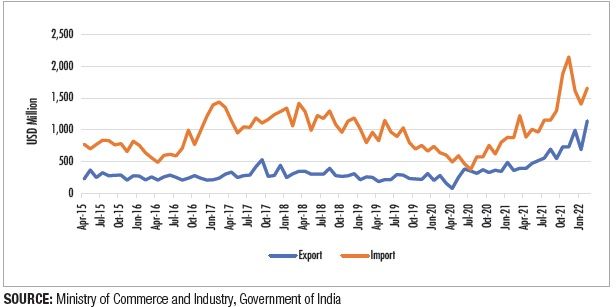
Figure 2 India’s Trade Flows With Australia (Annual)
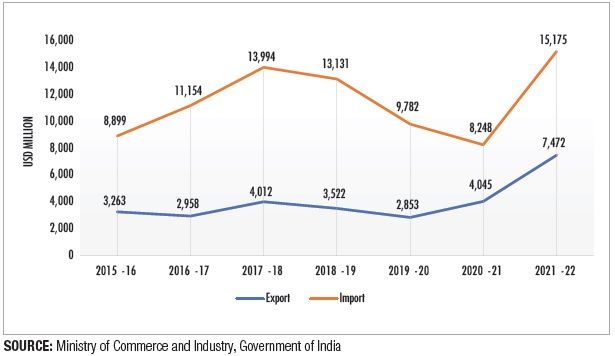
Pharmaceuticals – Under the ECTA, India and Australia will work together to ease trade in human prescription medicines and medical devices. Therapeutic goods regulators of both the countries have agreed to fast track approval for patented generic and biosimilar medicines. Both sides will play a part in supervising and ensuring smooth trade in pharma commodities between both the countries. Australia has a market for pharmaceuticals worth about $12 billion. But Indian exports are just about $345 million. With this agreement, the regulations have been significantly eased to facilitate exports of medicines from India.
Agriculture – Under the agreement, Australia will get the opportunity to export certain varieties of its agricultural produce like potatoes, lentils, and meat products, but bovine meat has been kept out of the agreement. Australia may also export equipment that are needed for food processing, but more importantly it will provide preferential access to all the labour-intensive sectors of export items from India.
Wine Industry – According to Nita Kapoor, chief executive officer of the International Spirits and Wines Association of India (ISWAI), ECTA will scale and grow the wine industry and benefit grape farmers in India. Under the agreement, India has agreed to reduce the duties on Australian wine. Tariffs on wine bottles with a minimum import price of $5 will be decreased from 150 per cent to 100 per cent on the deal’s implementation and later to 50 per cent in 10 years. The duty on bottles with a minimum import price of $15 will be decreased from 150 per cent to 75 per cent, and later to 25 per cent in 10 years.
Engineering Products – Prior to the agreement, most of the exports of engineering goods to Australia faced about 5 per cent customs tariff burden. These products included non-electrical and electrical machinery, transport equipment, scientific and medical equipment, iron and steel products, etc. With the removal of tariffs under the agreement, it is expected that engineering products exports will expand by around 15 per cent per year. As Australian exports are primarily focused on raw materials and refined fuels, it will enable Indian industries to procure cheaper raw material which will make their products cost-effective and competitive.
Coking Coal – Coking coal is imported by the Steel Authority of India Limited (SAIL) and other steel manufacturing units mainly to bridge the gap between the requirement and indigenous availability and to improve the quality. The removal of taxes on coking coal which accounts for about 73 per cent of coal imports is also expected to give a boost to the Indian steel industry.
Figure 3 India’s Import of Coking Coal from Australia
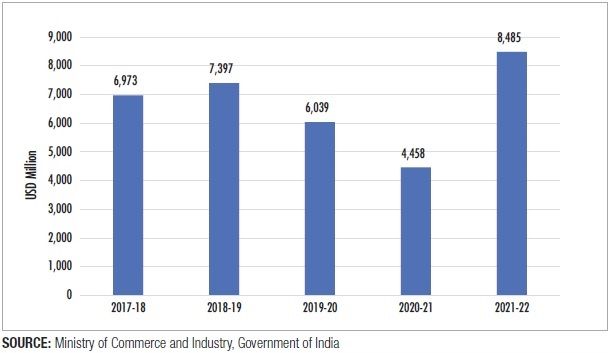
Figure 4 India’s top 10 exported product categories to Australia
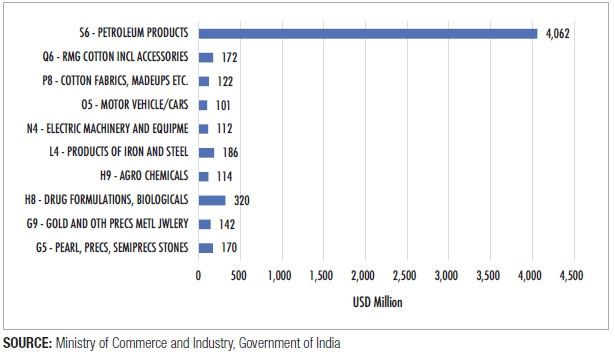
Figure 5 India’s top 10 imported product categories from Australia
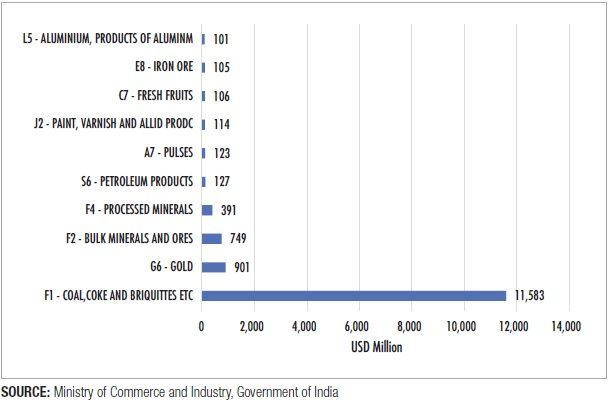
Sanitary And Phytosanitary (SPS) Measures – The main objective of the ECTA is to provide a framework to facilitate bilateral trade between both the countries, while safeguarding human, animal, plant lives and health. Therapeutic goods regulators of both the countries have agreed to assess the trade that requires sanitary and phytosanitary review as per the law of the country. The importing party will establish or maintain an SPS measure applicable to the exporting party, while the exporting party may request the importing party to recognise its local conditions for any relevant pest or disease. If either party finds an instance of non-compliance, corrective measures will be taken by both sides.
Textiles – Exports of Indian textiles to Australia have lot of potential. In Australia, about 70 per cent of Indian textile exports and 90 per cent of Indian apparel exports are presently subject to a 5 per cent duty. India’s Apparel Export Promotion Council (AEPC) has stated that the agreement will do away the duty disadvantage faced by the Indian garment exporters. “Duty free access to apparels will bring us at par with the global rivals and make Indian products competitive in international market. It is expected that India’s textile and apparel exports will increase in the next three years,” according to AEPC.
Leather and footwear – Council for Leather Exports vice chairman RK Jalan said that the ECTA will certainly boost India’s footwear and leather exports. “Indian products currently have 3-5 per cent market share in the about $2 billion Australian market of footwear and leather accessories, which is largely dominated by China. After duty free exports, our products can compete with Chinese products, and exports will be raised by 25 per cent.”
Double taxation avoidance agreement – The Australian government has agreed to modify its domestic taxation law to eliminate the taxation of offshore income earned by Indian companies that provide technical services to Australia. It is a major relief for Indian IT firms such as Infosys Ltd, Wipro Ltd, Tata Consultancy Services Ltd, and HCL Technologies Ltd. Once the relevant correction is made, the Indian IT companies would no longer be required to pay taxes on offshore incomes in Australia, thereby encouraging them to scale up their Australian operations.
Services Sector – As per the agreement, Indian chefs and yoga teachers will get 1,800 entry quotas into Australia. Indian students in Australia will be able to secure work visas for periods ranging from 2 to 4 years post studies in STEM and IT sector and work and holiday visa arrangement for young professionals. Due to additional capacity creation and investment by increased export, additional employment generation is expected to be 10 lakhs within the next 5 years which will improve living standards and enhance the overall welfare of the peoples of both the countries. Australia requires skilled technical workforce, which India can provide. The Australian start-up setting requires specialised talent and India has the capacity to offer skilled employees that can meet this requirement.
Excluded Products – India has kept several goods such as milk and other dairy products, wheat, rice, bajra, sunflowers seed oil, pistachio nut, walnut, apple, sugar, and chickpeas in the exclusion category, and these will not be part of agreement or any sort of duty concession which is a major advantage for India.
IN SUMMARY
The ECTA will allow Indian products and services not currently exported to Australia to enter the Australian market. The agreement is a stepping-stone towards a full Australia-India Comprehensive Economic Cooperation Agreement (CECA) slated to be completed by the end of this year. Companies in India and Australia will now look at the new prospects with renewed interest.



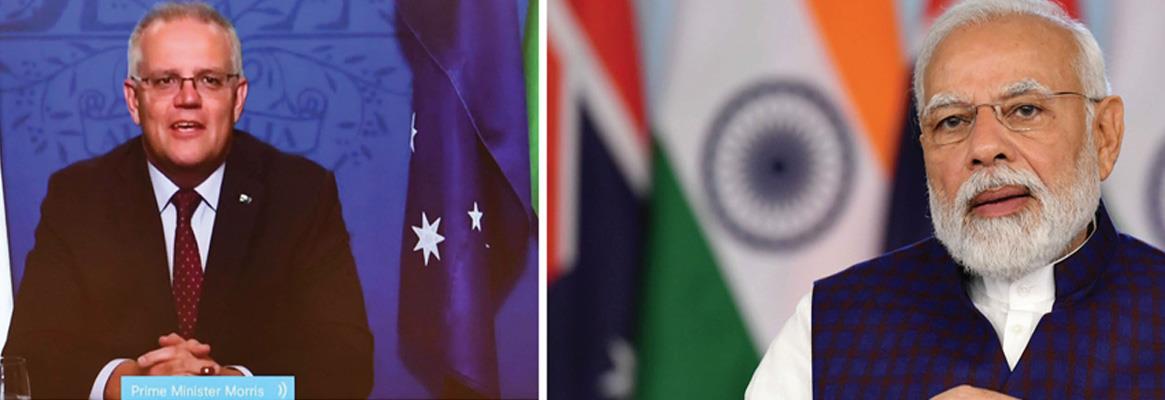



Comments